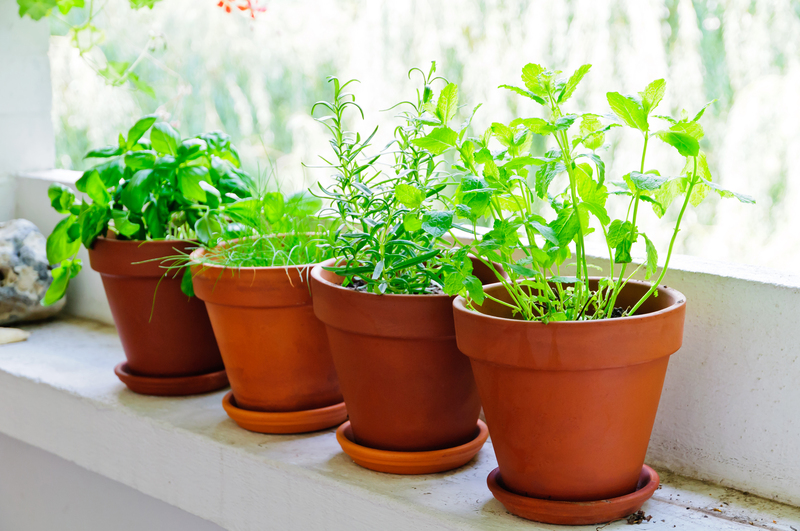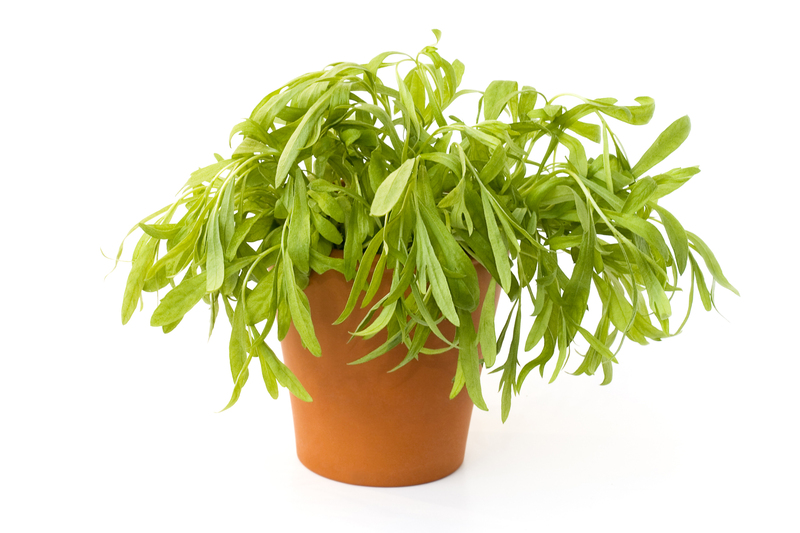Creating a Wind-Resistant Garden Sanctuary
Posted on 12/06/2025
A lush, vibrant garden offers a serene escape and a space to reconnect with nature. But in areas where strong winds frequently whip through, gardening can come with unique challenges. Wind-resistant garden sanctuaries not only shield delicate plants but also provide comfort and tranquility for those seeking to unwind outdoors. In this comprehensive guide, you'll discover expert tips and strategies to design, plant, and maintain a wind-resistant garden that flourishes in even the windiest locations.
Understanding the Impact of Wind on Your Garden
Before you begin planning your windproof sanctuary, it's crucial to understand exactly how wind affects your garden:
- Soil Erosion - Persistent wind can strip away topsoil, essential nutrients, and disturb young roots.
- Physical Damage - Strong gusts may snap stems, uproot plants, or cause excessive drying (windburn).
- Pollination Issues - Wind can disrupt natural pollinators and hinder the fertilization of flowers and vegetables.
- Water Loss - Increased evaporation leads to drought stress and greater irrigation needs.
Recognizing these obstacles will help you create a wind-resistant garden sanctuary that not only survives but thrives.

Designing Your Wind-Resistant Garden Sanctuary
A well-designed wind-resistant landscape is both functional and beautiful. Here's how to start:
1. Assess Your Garden Site
- Observe prevailing wind directions throughout the year.
- Note any natural windbreaks such as fences, walls, or mature trees.
- Identify exposed areas needing the most protection and sheltered spots that could support sensitive plants.
2. Plan for Windbreaks and Shelter Belts
Effective windbreaks are essential for building a garden sanctuary that resists wind damage. Windbreaks work by slowing and redirecting air currents, reducing their damaging effects.
- Living Windbreaks: Hedges, shrubs, and trees create natural screens that filter and diffuse wind.
- Structures: Fences, walls, and trellises offer immediate wind protection and can be enhanced by trained climbing plants.
- Layered Planting: Combining different plant heights (tall at the back, then medium, then low) creates an effective wind barrier and visually appealing composition.
3. Choose the Right Location for Key Features
- Seating Areas: Place patios or benches in spaces naturally sheltered by windbreaks.
- Water Features and Statues: Protect these from direct wind exposure to prevent water loss and structural damage.
- Vegetable Beds: Locate kitchen gardens where they're shielded from harsh winds but receive adequate sunlight.
Selecting Wind-Resistant Plants for Your Sanctuary
Not all plants are equally equipped to weather storms. A wind-resistant garden relies on species that handle gusty conditions well.
1. Trees and Shrubs
- Pines and Junipers: Their flexible branches and dense needles filter wind efficiently.
- Hawthorn, Cotoneaster, Privet: These shrubs form thick, wind-filtering hedges and offer wildlife habitat.
- Escallonia and Griselinia: Popular for coastal gardens, these evergreen hedges withstand salty breezes.
2. Perennials and Grasses
- Lavender, Agapanthus, Yarrow: Strong stems and compact growth make these good choices for exposed spots.
- Ornamental Grasses (Miscanthus, Fescue): Flexible and movement-friendly, these add texture and drama while withstanding wind.
- Daylilies, Sedum, Echinacea: Deep roots and sturdy bases keep them secure during tempests.
3. Ground Covers
- Thyme, Creeping Phlox, Vinca Minor: Low-growing plants protect bare soil and reduce erosion.
Incorporate a mix of these wind-resistant plant species for foundational structure and year-round visual interest.
Creating and Positioning Windbreaks
1. Building Effective Windbreaks
A windbreak's success depends on density, height, and permeability. Here's how to maximize their impact:
- Permeable Screens (Best): A windbreak that filters 50-60% of the wind is more effective than a solid barrier, which can create damaging eddies and turbulence behind it.
- Height: For every 1 meter of windbreak height, you'll get about 5-7 meters of sheltered distance downwind. Plant/tailor accordingly.
- Staggered Rows: Planting two staggered rows of shrubs and trees ensures better wind filtration and structural stability.
2. Strategic Placement
- Position windbreaks perpendicular to prevailing winds.
- Protect vulnerable features (such as decks and outdoor dining areas) by orienting windbreaks on the windward side.
- For maximum shelter, wrap windbreaks partially around key zones.
Garden Design Tips for Ultimate Wind Resistance
1. Embrace Layering
- Use layers of tall hedges, medium-height shrubs, and ground covers to create a gradual reduction in wind speed.
2. Hardscaping Solutions
- Stone Walls: Natural stone absorbs and radiates heat, protects planting areas, and adds landscape beauty.
- Lattice and Trellises: These filter wind and offer vertical growing spaces for climbers and vines.
- Sheltered Pergolas: Covered structures add both shade and wind blockage.
3. Focus on Soil Health
- Mulch liberally with organic matter to prevent erosion and retain moisture.
- Use ground covers where possible to stabilize soil and shield roots from windburn.
Sustainable Maintenance of Your Wind-Resistant Sanctuary
1. Mulching and Irrigation
- Mulch acts as an insulator, retaining soil moisture and suppressing weeds commonly exposed by wind.
- Drip irrigation systems efficiently water your plants at the roots, minimizing evaporation from the surface.
2. Regular Pruning
- Trim windbreak hedges and shelterbelts regularly to maintain their density and shape.
- Cut back damaged or broken stems after storms to encourage healthy regrowth.
3. Staking and Support
- Younger trees and top-heavy plants will benefit from staking until well-established. Use flexible ties to prevent girdling.
- Remove stakes when plants can withstand wind on their own, ensuring strong root and stem development.
Popular Plants for Wind-Resistant Gardens
Here are some tried-and-true favorites for different climates:
- Coastal: Elaeagnus, Griselinia, Sea Buckthorn, New Zealand Flax
- Inland: Viburnum, Rosa Rugosa, Hornbeam, Blackthorn
- Ornamentals: Russian Sage, Fountain Grass, Gaura, Wallflower
Choose native or acclimatized species for best success in your local environment.
Wind-Resistant Sanctuary Design Inspiration
- Secret Seating Nooks: Place a garden bench behind a hedge or trellis, enveloped in fragrant climbers for a peaceful wind-protected retreat.
- Wildlife Havens: Dense trees and shrubs not only block wind but also provide birds and pollinators with shelter and food.
- Enclosed Courtyards: Use sturdy walls, layered greenery, and container plantings to create an inviting meditative zone outside the wind's reach.
- Edible Windbreaks: Consider trained fruiting hedges (such as espalier apples or berry bushes) to combine practical shelter with tasty harvests.
Common Mistakes to Avoid in Windy Gardens
- Overusing Solid Barriers: These can inadvertently funnel and intensify wind in certain areas. Incorporate permeable screens instead.
- Ignoring Microclimates: Don't overlook more sheltered pockets where you can grow more delicate species.
- Poor Plant Selection: Tender, shallow-rooted species won't perform in exposed sites, so prioritize wind-resistant varieties for vulnerable spots.
- Neglecting Soil: Wind-swept soils deplete rapidly; keep them healthy and mulched.

Frequently Asked Questions about Windproof Gardens
- Q: Can I create a wind-resistant sanctuary on a balcony or small urban lot?
A: Absolutely! Use tall containers, trellises with climbers, and intentional placement of outdoor furniture to divert wind and enjoy a tranquil retreat, even in limited spaces. - Q: How quickly do windbreaks become effective?
A: Fast-growing species like privet, bamboo (non-invasive types), or willow can provide substantial protection within a couple of seasons. Combine permanent structures for immediate shelter while living windbreaks establish. - Q: Which climbing plants are best for windy places?
A: Star jasmine, honeysuckle, and Virginia creeper are tough climbers that tolerate wind and support trellised windbreaks beautifully.
Conclusion: Transforming Exposure into a Sheltered Sanctuary
Creating a wind-resistant garden sanctuary transforms even the breeziest site into a thriving, restful haven for people and wildlife alike. By combining thoughtful design, smart plant choices, and sustainable maintenance, your wind-resistant garden retreat can defy the elements while offering year-round beauty and inspiration. Let nature's power shape--not hinder--your outdoor sanctuary, so you can unwind in peace, surrounded by flourishing, resilient greenery.
Ready to create your windproof garden? Use these expert tips to design, plant, and protect your personal sanctuary--no matter how strong the winds may blow!

